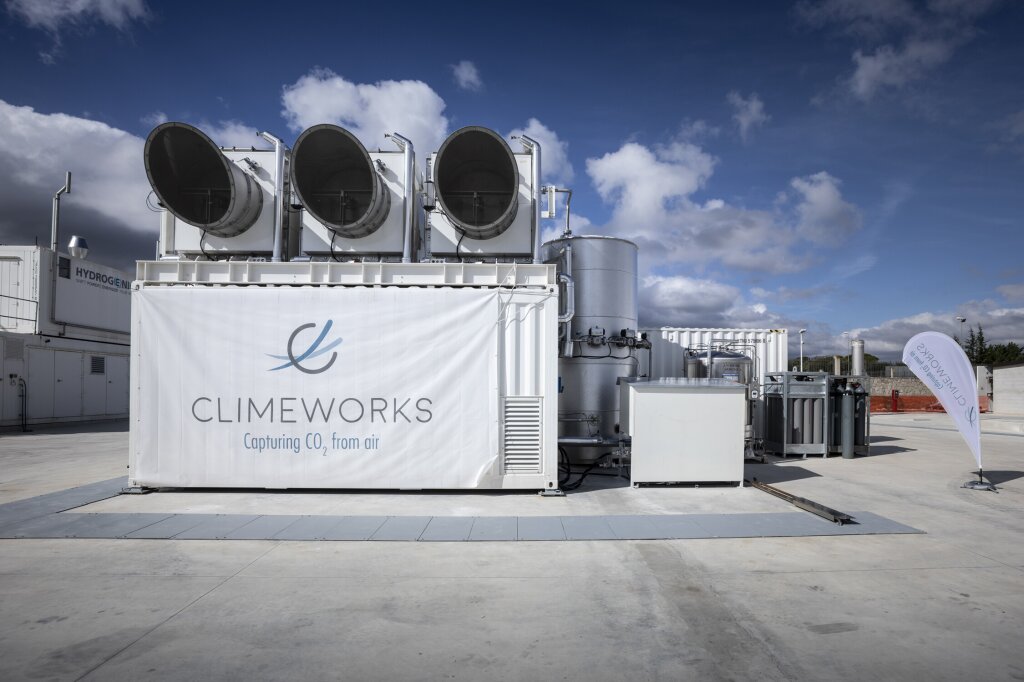
Climeworks, a pioneer in Direct Air Capture (DAC) technology, has made substantial progress in removing CO₂ from the atmosphere.
Through their innovative solutions, they have managed to remove more CO₂ than any other company in this field combined.
Their operational success and experience have set them apart, with Climeworks now running two DAC facilities, Orca and Mammoth, in Iceland.
Climeworks is the only company actively building and operating these DAC facilities at scale, having transitioned successfully from research to large-scale operations.
Their next big step involves the construction of a megaton removal DAC hub in Louisiana, expanding their global footprint and reinforcing their commitment to addressing climate change with large-scale DAC deployment.
>> In Company Spotlight: Climeworks
How Climeworks Masters the Process of Building a Direct Air Capture Facility
Building a Direct Air Capture plant is a multifaceted endeavor that involves several stages. Climeworks has developed a meticulous approach through years of experience, making them a leader in this space.
Below is a breakdown of the essential stages in the development of a DAC plant.
1. Preparation: From R&D to FEED Study (4-5 Years)
The initial phase of any DAC project starts with research and development (R&D), which is critical to advancing the technology.
For Climeworks, the Orca facility in Iceland provided a foundation for further advancements that were incorporated into the Mammoth plant.
Another vital step in preparation is identifying the right location. Climeworks carefully evaluates factors such as access to low-carbon energy and geological conditions for CO₂ storage.
In addition to technical considerations, they work closely with political and economic stakeholders to ensure project viability.
After site selection, Climeworks moves forward with a Front-End Engineering and Design (FEED) study, a detailed blueprint for the project.
This study, which includes cost estimates and design specifications, provides a foundation for the Final Investment Decision (FID).
In the case of the Mammoth plant, Climeworks began the FEED study in April 2021 and reached a Final Investment Decision within a year.
2. Design and Construction (2-3 Years)
After the FID, the real work begins. Detailed design and construction plans are developed, allowing the site preparation and construction to start. Construction timelines vary depending on the size of the facility but generally take 2-5 years.
In June 2022, Climeworks broke ground for the Mammoth plant and inaugurated it in May 2024, with 12 out of 72 CO₂ collectors operational.
One unique aspect of Climeworks' design is their modular approach. Each DAC plant is built with CO₂ collector containers, allowing the plant to start operations while construction continues.
This flexible system makes it easier to phase in operations as sections of the plant are completed.

>> In Other News: DOE Invests $58 Million to Tackle Climate Change by Removing Carbon From the Atmosphere
3. Commissioning (6-12 Months)
Once construction is near completion, the plant enters the commissioning phase. During this period, all systems are tested to ensure smooth integration.
For Climeworks, commissioning includes the phased operation of parts of the plant, providing valuable data while the rest of the construction continues.
At the Mammoth plant, 12 CO₂ collector containers were commissioned in late 2023, offering insight into the plant’s capacity, which is forecasted to remove 20,000-22,000 tons of CO₂ annually.
4. Ramp-Up Phase (2-3 Years)
Following commissioning, the plant gradually increases operations. This phase is crucial for identifying any early-stage defects or inefficiencies, allowing adjustments before the plant reaches full operational capacity.
The ramp-up period typically lasts between 2-3 years, ensuring that the plant is optimized for long-term operation.
5. Steady-State Operations and Continuous Improvement (20+ Years)
Once the plant has successfully ramped up, it enters the steady-state operations phase, which can last more than 20 years.
During this time, the plant consistently removes CO₂, while undergoing regular monitoring and maintenance to ensure optimal performance.
One significant advantage of Climeworks' DAC technology is that it allows for continuous improvement.
With its modular design, future technological advancements can be easily integrated into the plant, increasing its efficiency over time.
Mammoth, for example, is expected to reach its steady-state operations by 2026, with ongoing upgrades planned to enhance its performance and capacity.
6. Technology Upgrades (Every 3-4 Years)
One of the key features of Climeworks' DAC facilities is their adaptability to new technologies. Every 3-4 years, Climeworks replaces the CO₂ filters, also known as sorbents, which are essential to capturing CO₂.
At these times, new innovations and advancements can be incorporated, making each upgrade an opportunity to increase efficiency and capacity.
With over 150 employees, including 30 chemists and material scientists, Climeworks continues to push the boundaries of DAC technology.
The company’s ongoing research and development ensure that each facility remains at the cutting edge of carbon removal technologies.
7. End of Lifetime (25 Years)
At the end of the plant’s operational life, Climeworks will begin the decommissioning process.
This involves safely dismantling systems and recycling materials where possible, contributing to a sustainable lifecycle for the plant.
Climeworks aims to ensure that as much of the plant is recycled as possible, reducing its environmental footprint.
Climeworks: Setting the Standard for Direct Air Capture
Climeworks has proven itself as a trusted leader in the field of Direct Air Capture.
Their long-standing commitment to innovation and operational excellence has earned them partnerships with major companies and government bodies, including up to $600 million in funding from the U.S. Department of Energy for Project Cypress, their upcoming DAC hub in Louisiana.
"Climeworks has consistently demonstrated its leadership in the Direct Air Capture industry, with over 120,000 hours of operational experience," says a spokesperson from the company.
"Our success in Iceland, combined with our upcoming projects in the U.S., reinforces our position as the leading provider of large-scale carbon removal solutions."
In conclusion, Climeworks’ ability to combine innovative technology with proven operational expertise sets them apart in the fight against climate change.
Their journey from R&D to building full-scale DAC plants showcases their capability to turn ideas into impactful solutions.
Subscribe to the newsletter
Daily decarbonization data and news delivered to your inbox
Follow the money flow of climate, technology, and energy investments to uncover new opportunities and jobs.
Companies
Latest issues
-
How Duke Energy Just Made Hydrogen History
Inside This Issue 💧 Duke Energy Florida Unveils Nation's First System Capable Of Producing, Storing And Combusting 100% Green Hydrogen ✈️ Technip Energies’ Hummingbird Technology Powers LanzaJet’s...
-
The $9B Deal That Almost Didn't Happen
Inside This Issue 💰 The $9B Deal That Almost Didn't Happen ⚖️ IMO Rules Understate Benefits of Utilising Captured Carbon, Says GCMD 🌾 Corteva and bp Launch Biofuel Feedstock Joint Venture Etlas 🔬 ...
-
Nebraska's 3-Plant Ethanol CCS Gamble Pays Off Big
Inside This Issue 🌽 Nebraska's 3-Plant Ethanol CCS Gamble Pays Off Big 🧊 New Evaporative Crystallizer Design Accelerates Direct-Air Carbon Capture ✈️ From SAF to Solar: DHL’s Bold Steps Toward Net...
Company Announcements
-
Capstone Green Energy Holdings, Inc. (the "Company” or “Capstone”) (OTCQX: CGEH), together with its subsidiaries, a leading provider of clean technology solutions using ultra-low emission microturb...
-
Duke Energy Florida, a subsidiary of Duke Energy, unveiled its DeBary Hydrogen Production Storage System in Volusia County, marking the first demonstration project in the United States capable of u...
-
ESG Clean Energy, LLC ("ESG"), developers of Net Zero Carbon Footprints and clean energy solutions for distributed power generation, announced today it has signed a licensing deal with Viking Energ...
-
LanzaTech Achieves Guaranteed Performance At Japan MSW-To-Ethanol Plant
Collaborative pilot at Kuji facility showcases robust ethanol yields using LanzaTech’s fermentation technology Achieved ethanol yields exceeding guaranteed performance for over 14 consecutive d...
